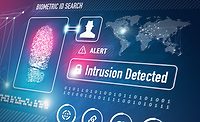The rapid development of video compression algorithms (JPEG, MJPEG, MPEG-4, etc.), computer processing speeds and reduction in data storage costs gave rise to the digital video recorder.
The DVR provided a convenient, if limited, replacement for the multiplexer and VCR combination, allowing non-linear access to recorded material usually selected by camera ID, time and date.


